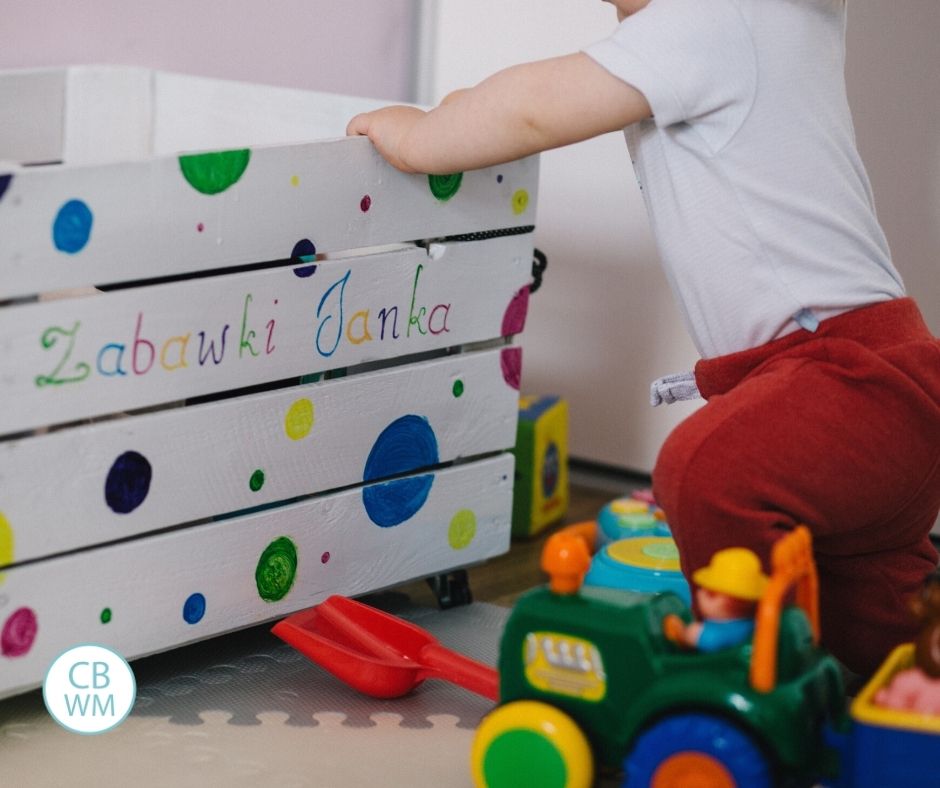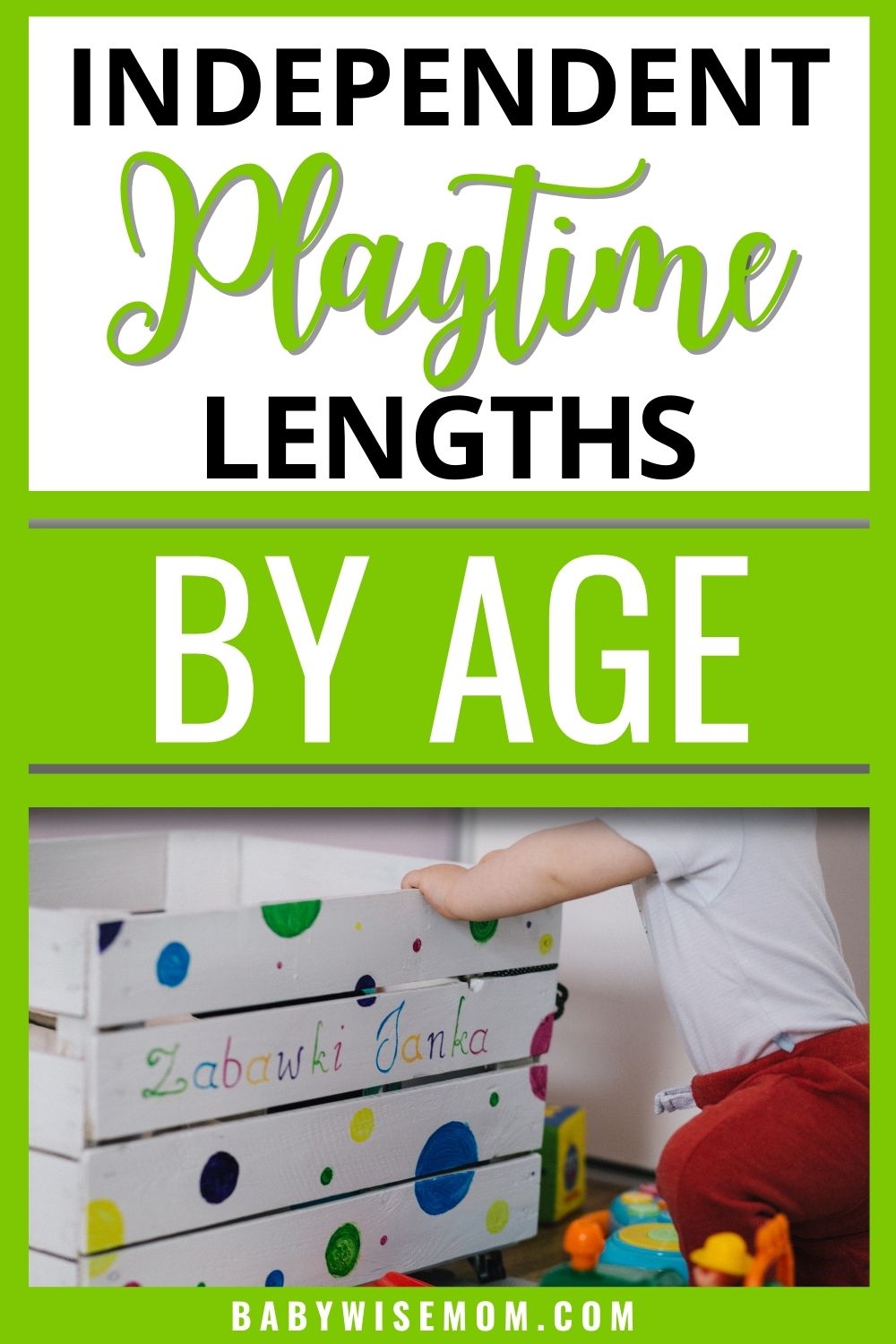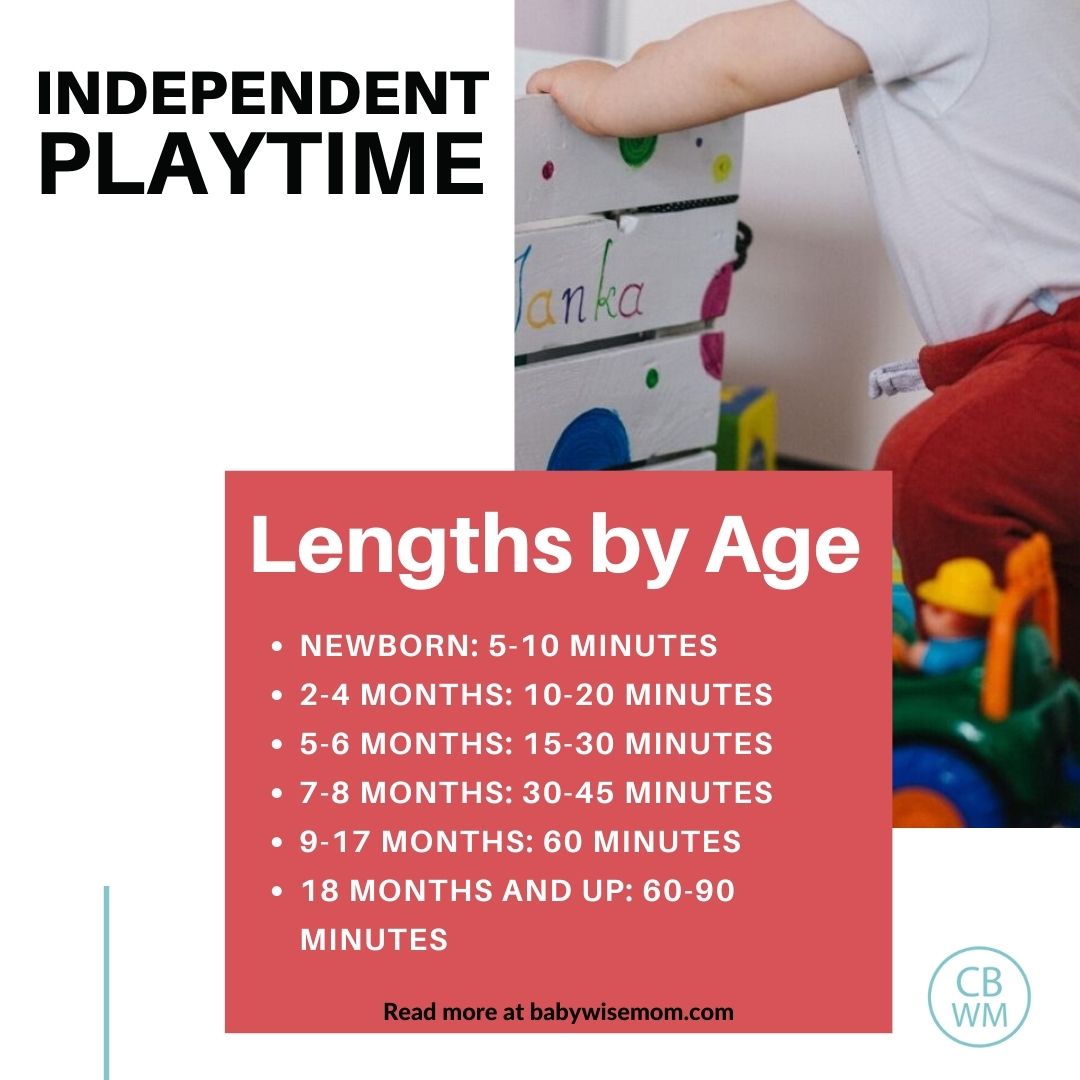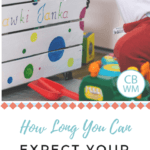Find out how long independent playtime should be for your little one. The amount of time you can expect your child to play alone each day during independent playtime.

Independent playtime is when your child plays alone, independently, for a period of time in the day.
Yep. All alone.
There are many, many benefits to independent play, not only for your child, but for you also.
Your child will develop skills like creativity, focusing, and sustained attention span.
You will have the perk of having a period of time in the day without a child right by your side. It is a great opportunity to cook, relax, clean, read, make phone calls, or attend to other children.
Independent playtime is one of my very favorite elements to a daily schedule. While we do not use it as much once kids are in school, we still return to it in long school breaks and summer. The introverts in my house are very relieved for this to be part of their day!
>>>Read: Independent Playtime: The Ultimate Overview
Post Contents
What Age To Start Independent Play
You can start independent play at any age. It is never too early and never too late.
As I became a more experienced mother, I started some version of independent play right away with my newborns.
Newborns can’t see far, so I stayed right there with my baby, but I was conscious to have a time each day when I let my baby play without getting in her face or talking to her. She just had quiet time to herself.
If you are just starting with a baby, see How To Get Your Baby Playing Independently.
You can still start this even with a toddler or child. Get tips in my post How To Start Independent Playtime Late.
Appropriate Independent Playtime Lengths by Age
People often wonder how long their child can be expected to play alone based on the age of the child.
The best length for your individual child is going to depend on your overall schedule, age of the child, and the length of waketime.
In general, here are common lengths based on your little one’s age. Most of these are found in On Becoming Babywise II (affiliate link):
- 5-10 minutes once or twice a day for the young newborn (my own personal addition)
- 10-20 minutes twice a day for the first few months
- 15-30 minutes twice a day for the independent sitter
- 30-45 minutes at least once a day for the crawler
- Up to 60 minutes for the 15-20 month old in playpen or room
- 60-90 minutes for 18 months and older in a room
- 60-90 minutes for toddlers, preschoolers, and children
These numbers are guidelines. Some days may be longer, some shorter.
For example, say it is Saturday and you have a family thing to get to. You can have a shorter than usual independent play so you can get to your family thing on time.
You also don’t want to overuse it (read abuse it) and turn it into an all day thing. Keep it in the range of normal for your child’s age and ability so he will not grow to hate it.
You also want it to be long enough for your child. I spoke of a few of the benefits of this activity earlier. The benefits will not be present if the time spent is not long enough.
As a note, I did independent play with Brayden only once a day because he didn’t love it. I also started independent playtime (often shortened to IPT on the Internet) later with Brayden–he was a young toddler when we started.
With Kaitlyn, we did it twice because she always loved it. My other two daughters loved it, also.
As Brayden got older, he grew to love this time. By the time he was 2.5, he very much looked forward to it. He was much happier once he moved from the playpen to playing in the room.
By the time he was nearly 3, he played for 1-1.5 (usually 1.5) hours once a day.
At 11 months, Kaitlyn did it twice a day. Her morning playtime was 20-30 minutes, depending on the amount of time before her nap. Her afternoon playtime was 40-45 minutes.
She never complained about it, but I would get her because I figured that is long enough for her at her age.
You can always see how long Independent Playtime was for any child at any age in their summaries:
Conclusion
You always want to go with what your individual child needs. These suggestions in this post will help guide you as to what you can expect and what is common for children based on their age and physical abilities.
Related Posts on Independent Playtime
- Independent Playtime is Not…
- Independent Playtime for the School-Aged Child
- Ransacking During Independent Playtime
- Resistance to Independent Playtime
- Roomtime
- Roomtime–Your Invitation
- Room Time Setup
- Starting Independent Playtime Late

This post originally appeared on this blog March 2008


